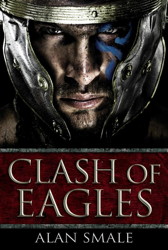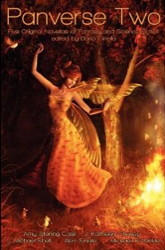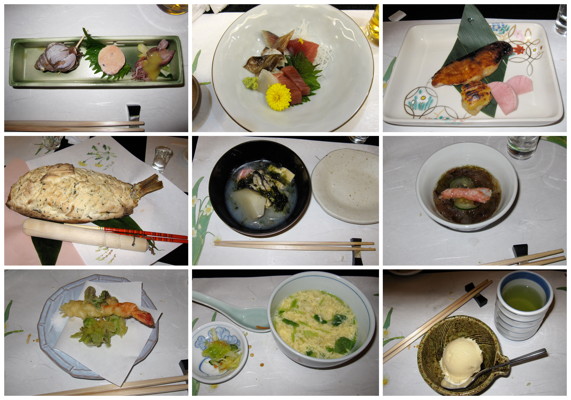
There’s no shortage of genre authors writing short fiction, and as a result it’s all too easy to miss some of the better ones who, despite landing sales to major markets don’t quite win enough of the popular vote to take home many awards or nominations. This week’s guest, Alan Smale may well be one of the best kept secrets of our field. He’s piled up a dozen or more “honorable mentions” in assorted Best Of reprint anthologies, and his novella, “A Clash of Eagles” — originally published in the anthology Panverse Two — won the 2010 Sidewise Award for Alternate History, Short Form. This month, the expanded, novel-length version of Clash of Eagles hits the stands, and once you read it you’re going to be searching back issues of your favorite magazines to read more of his work.

LMS: Welcome, Alan, it’s a pleasure having you here. So, what’s your most memorable meal?
AS: Thanks for asking! Given my historical obsessions, I’ve always yearned to scurry back in time and be welcomed as an honored guest at one of those notoriously lavish banquets of ancient Rome, where I might sample sow’s udders stuffed with milk and eggs, sea urchins with spices and oil, fallow deer roasted with dates and raisins, dormice stuffed with pork and pine kernels, flamingo tongues, and other decadent fare. I’d loll on my couch in my toga being entertained by erudite natural philosophers and served by comely attendants. I’d be sure to leave room for the fricassee of roses and the hot African sweet-wine cakes they’d serve me for dessert.
Then again… even in Roman high-end-cuisine the meat and vegetables were probably overcooked and the spices heavy-handed. Perhaps the popularity of garum as an ingredient – a sauce made of decaying fish intestines – may provide a clue. The Falernian wines they favored would seem horribly sweet to a modern palate, and were so alcoholic you could set fire to them if you weren’t careful. And I’d find it more comforting to tip my waitstaff if I knew they were going back to their own homes afterwards as free people.
In real life I prefer something more moderate. Smaller portions, each course well thought out, delightfully prepared, and artistically presented. Erudite company is still a plus, though.
So at the risk of incurring whiplash I’m now going to describe a real-life meal I enjoyed in modern Japan. Possibly about as far from ancient Rome as you can get.
In my alternate, non-author existence I’m a scientist at the NASA Goddard Space Flight Center, and I’ve been lucky enough to make several trips to Japan in connection with their highly successful series of X-ray astronomy satellites. In March 2009 I went to the Institute of Space and Astronautical Science in Tokyo for a two-week trip that combined a science meeting for the next Japanese-US X-ray astronomy satellite with a meeting to finalize the observing program for the current Suzaku mission. Our hotel was in Machida, a city buried deep in the western metropolitan area of the Tokyo urban sprawl. The restaurant was Sanpo-Michi in nearby Fuchinobe, which appears prominently on Japanese language foodie sites but is cunningly (deliberately?) concealed from non-Japanese speakers. We were eleven at dinner: our three Japanese hosts from ISAS, my close friend Koji Mukai, myself, and six other gaijin scientists. We sat in an austere private room, cross-legged on mats on a pine floor with our knees rather painfully inserted under a low traditional table, where we ate a rather exceptional… nine-course banquet.
As best I understand it, it was a modern take on a traditional Kaiseki multi-course meal. Kaiseki literally means “stone in the bosom†and was originally a frugal repast designed to fight away hunger. Warm stones were apparently placed in the robes of Zen monks to mimic the experience of culinary satiation. Nowadays Kaiseki is an art form with multiple themed dishes in a variety of styles – grilled, stewed, tempura, and so forth. In our case it featured a combination of seafood and vegetables.
Course One, the appetizer, was an elegant triptych: a snail, a fish liver, and a baby octopus. And let’s get the controversial item out of the way right at the start: the fish liver was Ankimo, the liver of a monkfish, one of the great delicacies of Japan. Monkfish are extraordinarily ugly with giant flat heads, but there’s a great deal of concern that they’re seriously overfished and that the trawling method used to catch them damages the ocean floor. None of which I knew at the time. Anyway, I’m here to report that Ankimo is creamy, delicate, and delicious. It was served with grated daikon radish, and for humor value the restaurant staff later brought out a whole daikon radish that was considerably larger than my head.
If the octopus was controversial, fortunately I don’t know about it. It came with a dash of yellow sauce, served over green onion.
Course Two was very fine sashimi. Course Three was a perfectly-grilled fish, the name of which history does not record.
Course Four was a whole fish baked in a salt dome, which might have been the least traditional food item we ate. The recipe may be European in origin; you can find recipes by Alton Brown and Mario Batali at the Food Network site (including the terrifying instruction “Pour 1 box of salt into a large bowlâ€). The dish is baked in a hot oven, a method not traditionally used in Japan. But, hey: we were served a fish that we had to smash our way into with small baseball bats, so that’s worth something. Fueled by sake, we whacked at that salt dome with gusto until we achieved ingress, and from within its salty depths we were then served a white fish (bream or white sea bass) that was exquisite and, for the record, not overly salty.
Let me move this along a little. Course Five was a single perfect oyster, served as the centerpiece of a bowl containing seaweed and a little tofu and vegetables. Course Six was crab, artfully served on a bed of jellyfish. Course Seven was a succulent piece of shrimp tempura over greens. Course Eight was a delicate rice and egg drop soup, and Course Nine was a scoop of simple but excellent ice cream, served with green tea. Regarding my earlier libations, photographs reveal that I began with a premium Yebisu beer and then moved on to Hakkaisan Honjozo sake for the rest of the evening.
It was all splendid and yes, just a little decadent.
So on reflection, perhaps I don’t need crunchy dormice, boiled ostrich, or a surfeit of lampreys. Although I do admit it might have been nice if there had been a litter to carry me back to Machida afterwards.
Maybe I should set my next book in Japan.
Thanks to Koji Mukai, also at NASA/GSFC, for his help in writing this. (despite his best efforts, any remaining errors are mine alone). Kanpai!

Thanks, Alan. Now if I could just get the phrase “crunchy dormice — part of a complete breakfast” out of my head…
Next Monday: Another author and another meal!
#SFWApro
Tags: Eating Authors




One Response to “Eating Authors: Alan Smale”